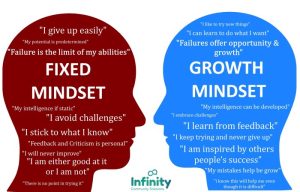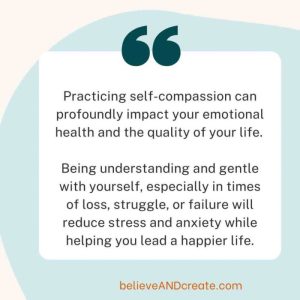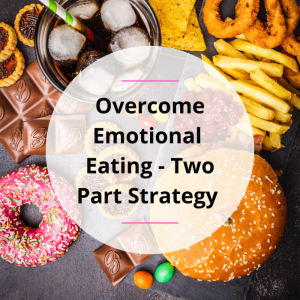Overcoming Emotional Eating A Practical Guide

Overcoming emotional eating begins with understanding the complex interplay between our feelings and our food choices. We often turn to food for comfort, solace, or distraction, but this can lead to unhealthy eating patterns and negative consequences for our physical and mental well-being. This guide explores the root causes of emotional eating, provides practical strategies for identifying personal triggers, and offers effective coping mechanisms to help you break free from this cycle and cultivate a healthier relationship with food.
This journey involves self-discovery, mindful awareness, and the development of healthy coping strategies. We will delve into techniques for managing stress and anxiety, explore the role of mindfulness and self-compassion, and discuss the benefits of seeking professional support when needed. Ultimately, this guide aims to empower you to take control of your eating habits and build a more fulfilling and balanced life.
Understanding Emotional Eating
Emotional eating is a coping mechanism where individuals turn to food to manage difficult emotions rather than addressing the underlying issues. It’s a complex behavior influenced by psychological, social, and environmental factors, often leading to unhealthy eating patterns and potential weight gain. Understanding the triggers and responses is crucial for developing effective strategies to overcome it.
Psychological Triggers of Emotional Eating
Emotional eating stems from a deep-seated connection between emotions and food. Negative emotions, particularly stress, anxiety, sadness, and boredom, can trigger cravings for comfort foods, often high in sugar, fat, and salt. These foods provide a temporary sense of relief and reward, reinforcing the behavior. Underlying psychological factors like low self-esteem, perfectionism, or past trauma can also contribute significantly.
The brain’s reward system releases dopamine, a neurotransmitter associated with pleasure, when consuming these foods, creating a powerful positive reinforcement loop. This reinforces the behavior, making it harder to break the cycle.
Common Emotions Linked to Overeating
A wide range of emotions can lead to emotional eating. Stress is a prevalent trigger, causing individuals to seek solace in food. Sadness and loneliness can also prompt overeating as a way to cope with feelings of emptiness. Boredom, often leading to mindless snacking, is another common culprit. Anger and frustration might manifest as uncontrolled eating episodes.
Conversely, even positive emotions like celebration or excitement can sometimes result in overindulgence.
Differentiating Emotional Hunger from True Hunger
Distinguishing between emotional and physical hunger is critical in breaking the cycle of emotional eating. True hunger is a gradual feeling, often accompanied by a rumbling stomach and a clear desire for specific nutritious foods. Emotional hunger, on the other hand, is often sudden and intense, marked by cravings for specific comfort foods, regardless of nutritional value. It’s often associated with feelings of stress, anxiety, or sadness, and is not easily satisfied.
Paying attention to the intensity and timing of hunger cues can help in identifying the underlying cause.
Situations Triggering Emotional Eating
Various situations can trigger emotional eating. Stressful events at work or home, relationship problems, financial difficulties, and social pressures can all lead to seeking comfort in food. Even seemingly mundane situations like watching television or feeling lonely can trigger cravings. Specific events, such as holidays or celebrations, can also lead to overeating, blurring the lines between social enjoyment and emotional consumption.
Comparing Emotional Eating and Healthy Eating Habits
| Trigger | Emotional Eating Response | Healthy Response | Long-Term Effects |
|---|---|---|---|
| Stress | Overeating high-calorie, processed foods | Engaging in stress-reducing activities like exercise, meditation, or spending time in nature. | Weight gain, increased health risks |
| Sadness | Consuming large amounts of comfort food | Seeking social support, engaging in self-care activities, or journaling. | Low self-esteem, potential for depression |
| Boredom | Mindless snacking on unhealthy options | Finding engaging activities, pursuing hobbies, or spending time with loved ones. | Weight gain, nutritional deficiencies |
| Celebration | Overindulging in celebratory foods | Enjoying celebratory foods in moderation, focusing on social interaction. | Temporary weight gain, potentially no long-term effects if balanced. |
Developing Healthy Coping Mechanisms: Overcoming Emotional Eating
Overcoming emotional eating requires developing healthy and effective strategies for managing stress, anxiety, and other difficult emotions without resorting to food. This involves identifying your emotional triggers and replacing the habitual response of eating with alternative coping mechanisms that promote well-being and self-care. By building a repertoire of these strategies, you can gradually reduce your reliance on food for emotional regulation.
Alternative Stress and Anxiety Management Techniques
Stress and anxiety are common triggers for emotional eating. Instead of reaching for food, explore alternative methods to alleviate these feelings. Engaging in these activities can interrupt the cycle of emotional eating and promote a sense of calm. Regular practice strengthens their effectiveness.
- Exercise: Physical activity releases endorphins, which have mood-boosting effects. A brisk walk, a yoga session, or even a short dance break can significantly reduce stress and anxiety levels.
- Deep Breathing Exercises: Simple deep breathing techniques, such as box breathing (inhale for 4 seconds, hold for 4 seconds, exhale for 4 seconds, hold for 4 seconds), can calm your nervous system and reduce feelings of overwhelm.
- Spending Time in Nature: Studies show that spending time outdoors can lower cortisol (the stress hormone) levels. A walk in the park, gardening, or simply sitting under a tree can be incredibly restorative.
- Progressive Muscle Relaxation: This technique involves systematically tensing and releasing different muscle groups in your body, promoting relaxation and reducing physical tension associated with stress.
Healthy Coping Mechanisms for Various Emotions
Different emotions call for different responses. Developing a range of coping strategies tailored to specific feelings is crucial for long-term success in managing emotional eating.
- Sadness: Engage in self-compassion, allow yourself to feel the sadness without judgment, and practice self-soothing activities like listening to calming music, taking a warm bath, or journaling.
- Anger: Find healthy ways to express anger, such as talking to a trusted friend or therapist, engaging in physical activity, or practicing assertive communication techniques.
- Boredom: Engage in hobbies, plan activities, read a book, listen to a podcast, or connect with friends and family to prevent boredom from leading to mindless eating.
- Loneliness: Reach out to loved ones, join social groups or clubs based on your interests, volunteer your time, or pursue online communities to combat feelings of isolation.
Relaxation Techniques to Reduce Emotional Eating Urges, Overcoming emotional eating
Implementing relaxation techniques can help manage the physiological responses associated with emotional eating urges. These techniques can interrupt the urge before it escalates into a full-blown eating episode.
- Meditation: Regular meditation practice can enhance self-awareness and emotional regulation, making it easier to recognize and manage emotional eating triggers.
- Guided Imagery: Visualizing calming scenes or positive experiences can help reduce stress and anxiety and redirect your focus away from food cravings.
- Yoga and Tai Chi: These practices combine physical postures, breathing techniques, and meditation to promote relaxation and reduce stress.
Benefits of Mindfulness Practices in Overcoming Emotional Eating
Mindfulness involves paying attention to the present moment without judgment. This practice can significantly aid in overcoming emotional eating by increasing self-awareness of your thoughts, feelings, and bodily sensations.
By cultivating mindfulness, you become more attuned to your hunger cues, distinguishing between true physical hunger and emotional hunger. This heightened awareness allows you to make conscious choices about eating rather than reacting impulsively to emotional triggers. Mindfulness also promotes self-compassion, reducing the likelihood of engaging in self-criticism and emotional eating as a coping mechanism.
A Step-by-Step Guide to Practicing Mindful Eating
Mindful eating is a powerful tool for breaking the cycle of emotional eating. This structured approach encourages you to pay close attention to the sensory experience of eating.
- Choose a quiet setting: Find a comfortable and distraction-free environment where you can fully focus on your meal.
- Engage all your senses: Before taking a bite, observe the food’s appearance, smell, and texture. Notice the colors, shapes, and aromas.
- Eat slowly and savor each bite: Chew thoroughly and pay attention to the tastes and sensations in your mouth. Put your fork down between bites.
- Notice your body’s signals: Pay attention to your hunger and fullness cues. Stop eating when you feel comfortably satisfied, not stuffed.
- Practice non-judgment: Avoid judging yourself for your eating habits. Simply observe your experiences without criticism.
Sleep and Mental Health

Sleep and emotional well-being are intricately linked. Sufficient, high-quality sleep significantly impacts our ability to manage emotions effectively, while sleep deprivation can exacerbate emotional vulnerabilities and increase the likelihood of unhealthy coping mechanisms, such as emotional eating. Understanding this connection is crucial for those seeking to overcome emotional eating patterns.
The Relationship Between Sleep Quality and Emotional Regulation
Adequate sleep allows the brain to consolidate memories and process emotions effectively. During sleep, the amygdala, the brain region associated with emotional processing, undergoes a period of recalibration. Insufficient sleep disrupts this process, leading to heightened emotional reactivity, increased irritability, and difficulty managing stress. Consequently, individuals lacking sufficient sleep may be more prone to emotional outbursts and less equipped to cope with challenging situations healthily, potentially turning to food for comfort.
Studies have shown a correlation between sleep deprivation and increased levels of cortisol, the stress hormone, further contributing to emotional instability and impulsive behaviors.
The Impact of Sleep Deprivation on Emotional Eating
Sleep deprivation directly affects the hormones that regulate appetite and satiety, namely leptin and ghrelin. Leptin signals fullness, while ghrelin stimulates hunger. When sleep-deprived, leptin levels decrease, and ghrelin levels increase, leading to increased hunger and cravings, particularly for high-calorie, palatable foods. This hormonal imbalance, combined with the emotional dysregulation discussed earlier, creates a perfect storm for emotional eating.
Individuals feeling stressed, irritable, and emotionally overwhelmed due to lack of sleep are more likely to seek solace in food, often choosing comfort foods rich in sugar and fat.
Tips for Improving Sleep Hygiene and Promoting Better Sleep Quality
Establishing consistent sleep hygiene is paramount. This involves creating a relaxing bedtime routine, ensuring a dark, quiet, and cool sleep environment, and avoiding caffeine and alcohol before bed. Regular exercise is also beneficial, but it should be avoided close to bedtime. Furthermore, maintaining a consistent sleep schedule, even on weekends, helps regulate the body’s natural sleep-wake cycle.
Practicing relaxation techniques such as deep breathing exercises or meditation before bed can further promote relaxation and improve sleep quality. Cognitive Behavioral Therapy for Insomnia (CBT-I) is a proven effective treatment for chronic insomnia and can be very beneficial for addressing sleep problems.
The Role of Sleep in Stress Management and Mental Well-being
Sleep plays a crucial role in stress management and overall mental well-being. During sleep, the body and mind have the opportunity to repair and restore themselves. Adequate sleep strengthens the immune system, improves cognitive function, and enhances mood regulation. Conversely, chronic sleep deprivation can lead to increased stress levels, anxiety, and depression, creating a vicious cycle that negatively impacts emotional health and potentially fuels emotional eating behaviors.
Prioritizing sleep is a proactive step towards better mental health and emotional resilience.
A Personalized Sleep Schedule to Improve Sleep Quality and Reduce Stress
Creating a personalized sleep schedule involves identifying a consistent bedtime and wake-up time that allows for 7-9 hours of sleep. This schedule should be adhered to consistently, even on weekends, to maintain a regular sleep-wake cycle. For example, if you need to wake up at 7:00 AM, your bedtime should be around 10:00 PM to 11:00 PM. This schedule should be adjusted based on individual needs and preferences, but consistency is key.
A relaxing bedtime routine, such as a warm bath, reading a book, or listening to calming music, can be incorporated to signal the body it’s time to wind down. Avoid screen time at least an hour before bed, as the blue light emitted from electronic devices can interfere with melatonin production, a hormone crucial for sleep regulation. If sleep difficulties persist, consulting a healthcare professional is advisable.
Therapy and Counseling Options

Addressing emotional eating often requires professional guidance. Therapy provides a structured environment to explore the root causes of this behavior and develop effective coping strategies. Different therapeutic approaches can be beneficial, offering personalized support tailored to individual needs and preferences.
Types of Therapy for Emotional Eating
Several therapeutic approaches can effectively address emotional eating. Cognitive Behavioral Therapy (CBT) helps identify and change negative thought patterns and behaviors associated with emotional eating. Dialectical Behavior Therapy (DBT) focuses on emotional regulation and distress tolerance skills, crucial for managing cravings and urges. Acceptance and Commitment Therapy (ACT) emphasizes accepting difficult emotions and committing to valued actions, promoting a healthier relationship with food and body image.
Intuitive eating, guided by a therapist, helps individuals reconnect with their body’s hunger and fullness cues, reducing reliance on emotional eating. Nutritional counseling, often integrated with therapy, provides guidance on healthy eating habits and meal planning.
Benefits of Seeking Professional Help
Seeking professional help for emotional eating offers numerous benefits. Therapy provides a safe and supportive space to explore underlying emotional issues contributing to the behavior. Therapists offer personalized strategies for managing cravings, stress, and negative emotions. Professional guidance helps individuals develop healthier coping mechanisms and improve their overall well-being. Therapy can lead to significant improvements in body image, self-esteem, and overall mental health.
Furthermore, a therapist can help individuals navigate the complexities of their relationship with food and develop a sustainable approach to healthy eating. The structured approach of therapy facilitates consistent progress and long-term success in overcoming emotional eating.
Resources for Finding Qualified Therapists
Numerous resources exist to help individuals find qualified therapists or counselors specializing in eating disorders and emotional eating. Psychology Today’s online directory allows searching for therapists by location, specialization, and insurance. Your primary care physician can provide referrals to mental health professionals in your area. The National Eating Disorders Association (NEDA) website offers a helpline and resources for finding treatment.
Many insurance companies maintain online directories of in-network therapists. Local community mental health centers also provide services and may offer sliding-scale fees based on income.
Finding a Good Therapist Fit
The therapeutic relationship is crucial for success. Finding a therapist who understands your specific needs and with whom you feel comfortable is essential. Consider factors such as the therapist’s experience with emotional eating, their therapeutic approach, and their personality. Reading online reviews and testimonials can provide insights into other clients’ experiences. Scheduling initial consultations with several therapists allows you to compare their approaches and determine the best fit.
A good therapist will create a safe and collaborative environment, fostering open communication and mutual respect. The initial sessions are opportunities to assess the therapeutic relationship and ensure a comfortable and productive working partnership.
Questions to Ask Potential Therapists
Before committing to therapy, it’s beneficial to gather information about the therapist’s experience and approach. Inquiring about their experience treating emotional eating and their preferred therapeutic methods helps determine compatibility. Understanding their approach to addressing underlying emotional issues is crucial. Knowing their fees and insurance coverage ensures affordability and accessibility. Clarifying their availability and session format helps establish realistic expectations.
Asking about their approach to confidentiality and crisis management provides assurance regarding client well-being and safety. Finally, discussing their experience working with diverse populations or specific cultural backgrounds can enhance the sense of comfort and understanding within the therapeutic relationship.
Overcoming Addictions
Emotional eating and addiction share striking similarities, both involving compulsive behaviors driven by intense urges and offering temporary relief from underlying emotional distress. However, they differ significantly in their object of compulsion – food versus substances or behaviors. While emotional eating focuses on consuming food to cope with negative emotions, addiction involves a substance or behavior that alters brain chemistry, leading to physical and psychological dependence.
Understanding these similarities and differences is crucial for effective treatment.
Similarities and Differences Between Emotional Eating and Addiction
Emotional eating and addiction share a common pathway: the brain’s reward system. Both activate this system, releasing dopamine and creating feelings of pleasure and satisfaction, reinforcing the behavior. This creates a cycle of craving, consumption, and subsequent relief, strengthening the addictive pattern. The key difference lies in the specific object of the compulsion. Addiction involves substances or behaviors that directly alter brain chemistry, creating a physical dependence, whereas emotional eating, while potentially harmful to health, doesn’t typically involve the same level of physiological dependence.
However, both conditions often stem from underlying emotional issues such as anxiety, depression, or trauma, requiring similar approaches to address the root causes.
The Role of Support Groups in Overcoming Addictive Behaviors
Support groups provide a crucial element in addiction recovery by fostering a sense of community and shared experience. Groups like Alcoholics Anonymous (AA), Narcotics Anonymous (NA), and Overeaters Anonymous (OA) offer a safe space for individuals to share their struggles, receive support, and learn coping strategies from others facing similar challenges. The shared experience helps individuals feel less isolated and provides a sense of validation.
The structured format of many groups, with regular meetings and a focus on shared principles, creates accountability and reinforces positive behaviors. Furthermore, the support and encouragement received from peers can significantly improve motivation and adherence to treatment plans.
Resources for Addiction Treatment and Recovery
Numerous resources are available for individuals seeking addiction treatment and recovery. These include professional therapists specializing in addiction, rehabilitation centers offering inpatient and outpatient programs, and support groups like those mentioned previously. The Substance Abuse and Mental Health Services Administration (SAMHSA) National Helpline (1-800-662-HELP) provides confidential treatment referral and information services. Online resources, such as the National Institute on Drug Abuse (NIDA) website, offer comprehensive information on various addictions and treatment options.
Choosing the right resource depends on the individual’s specific needs, the severity of the addiction, and available resources. A thorough assessment by a healthcare professional is crucial to determine the most appropriate course of action.
Strategies for Managing Cravings and Triggers Related to Addictive Behaviors
Managing cravings and triggers is essential for long-term recovery. Strategies include identifying personal triggers – situations, emotions, or people that provoke cravings – and developing coping mechanisms to navigate these situations. This might involve practicing mindfulness techniques to increase self-awareness, engaging in alternative activities to distract from cravings, or seeking support from friends, family, or support groups. Developing a strong support network is vital.
Cognitive Behavioral Therapy (CBT) is a highly effective therapeutic approach that helps individuals identify and change negative thought patterns and behaviors contributing to addiction. Regular exercise, healthy eating, and sufficient sleep are also crucial components of a comprehensive recovery plan.
Creating a Plan for Seeking Professional Help for Addiction
Seeking professional help is a critical step in overcoming addiction. The first step involves acknowledging the problem and recognizing the need for assistance. Researching available treatment options and choosing a qualified professional is crucial. This may involve contacting a healthcare provider for a referral, searching online directories of therapists specializing in addiction, or contacting a local rehabilitation center.
When contacting a potential therapist or treatment center, it’s important to inquire about their experience, treatment approach, and insurance coverage. Creating a clear plan with specific goals and steps, including scheduling appointments and identifying support systems, is vital for success. Open communication with family and friends can also contribute significantly to a successful recovery journey.
Breaking free from emotional eating is a journey, not a destination. It requires patience, self-compassion, and a willingness to learn and grow. By understanding your triggers, developing healthy coping mechanisms, and prioritizing self-care, you can cultivate a healthier relationship with food and achieve lasting change. Remember that seeking professional support is a sign of strength, not weakness, and can significantly enhance your progress.
Embrace the process, celebrate your successes, and be kind to yourself along the way. You deserve a life free from the grip of emotional eating.
FAQ Section
What if I relapse?
Relapses are a normal part of the process. Don’t beat yourself up; learn from the experience, identify what triggered the relapse, and adjust your strategies accordingly.
How long does it take to overcome emotional eating?
The timeframe varies greatly depending on individual circumstances and commitment to the process. It’s a journey that requires ongoing effort and self-compassion.
Can I do this without professional help?
While self-help resources can be beneficial, professional guidance from a therapist or registered dietitian can significantly accelerate progress and provide personalized support.
What if I don’t know where to start?
Begin by identifying one small change you can make, such as keeping a food journal or practicing mindful eating for 5 minutes daily. Gradually build upon your successes.






